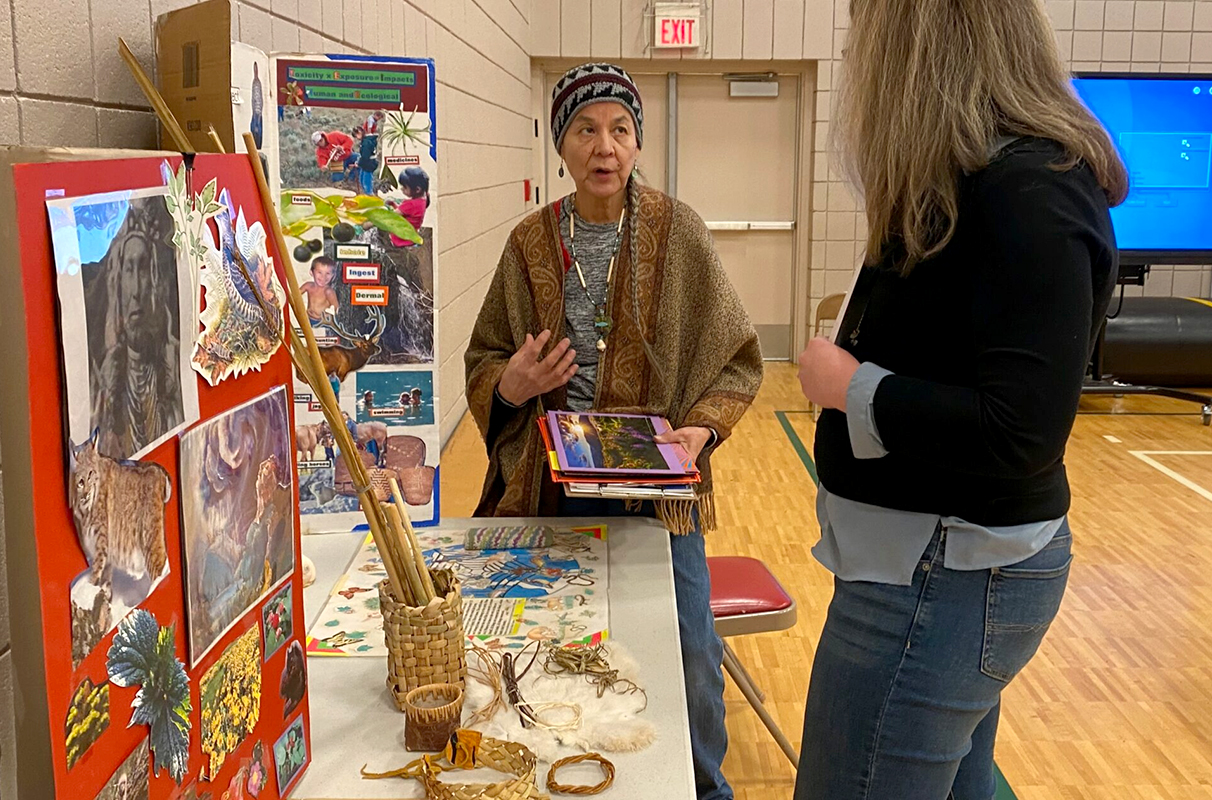
A group of Washington State University landscape architecture students is gaining hands-on experience by designing an outdoor classroom with members of the Confederated Tribes of the Colville Indian Reservation.
The students will give final presentations on their project at 1:30 p.m. on Monday, April 22, at the Elson S. Floyd Cultural Center.
The project is with the Keller School District whose students are members of the Confederated Tribe. The product, called a story walk, is a linear outdoor classroom with stopping points along the way. Signs will provide information and background about the San Poil Band and their cultures, said Michael Sánchez, assistant professor in the School of Design and Construction.
“They have a lot of cultural goals for this — a lot of the connection with the plant material and how they use that material for different things, such as for food, fibers, structures, and buildings,” he said.
The project started several years ago with an effort from a group of fifth and sixth grade students in the Keller School District who proposed the idea and drew up plans for it. The Washington State legislature provided funding for the project, but the district needed help with its design. Grant writer Pat Hayes turned to the School of Design and Construction for design help, and earlier this year, the WSU students visited the Colville reservation to meet with students and community members.
The project will introduce the school’s students to traditional cultural values of the community, but it is also giving them an introduction to opportunities in higher education, said Hayes. The children who came up with the project idea are now in high school, and the WSU team is hoping they can attend the final presentation.
“It is very common for a Native kid to graduate from high school and get to go to a good college and quite often, that kid never comes back to the reservation because there are so many opportunities outside,” he said. “If my kids can start seeing the value of higher education here on the reservation and get introduced to young people who are interested in and engaging with them, it’s definitely a benefit.”
For the WSU students, the project provides experience with community engagement as well as working in an ecologically-oriented landscape, said Kate Kraszewski, assistant professor in the School of Design and Construction.
“It’s a real-life project, so it’s something that they will hopefully be able to interact with in their future profession,” she said.
Robin Lickness, a sophomore in landscape architecture, is excited to work on the project because she is interested in native plants and restoration. She is taking the opportunity to learn about different plant species in the Pacific Northwest. Her part of the project is to create areas throughout the site for placing culturally and historically significant plants.
“Being able to understand those plant materials a lot better, plus understanding their cultural significance, makes it a lot easier to be able to find a place of importance within design,” she said. “I’m building up my own portfolio of plant materials and not just using landscape plants but using native plants in an artistic way.”
